Catalogue > Search
Results for : Catalogue 2022
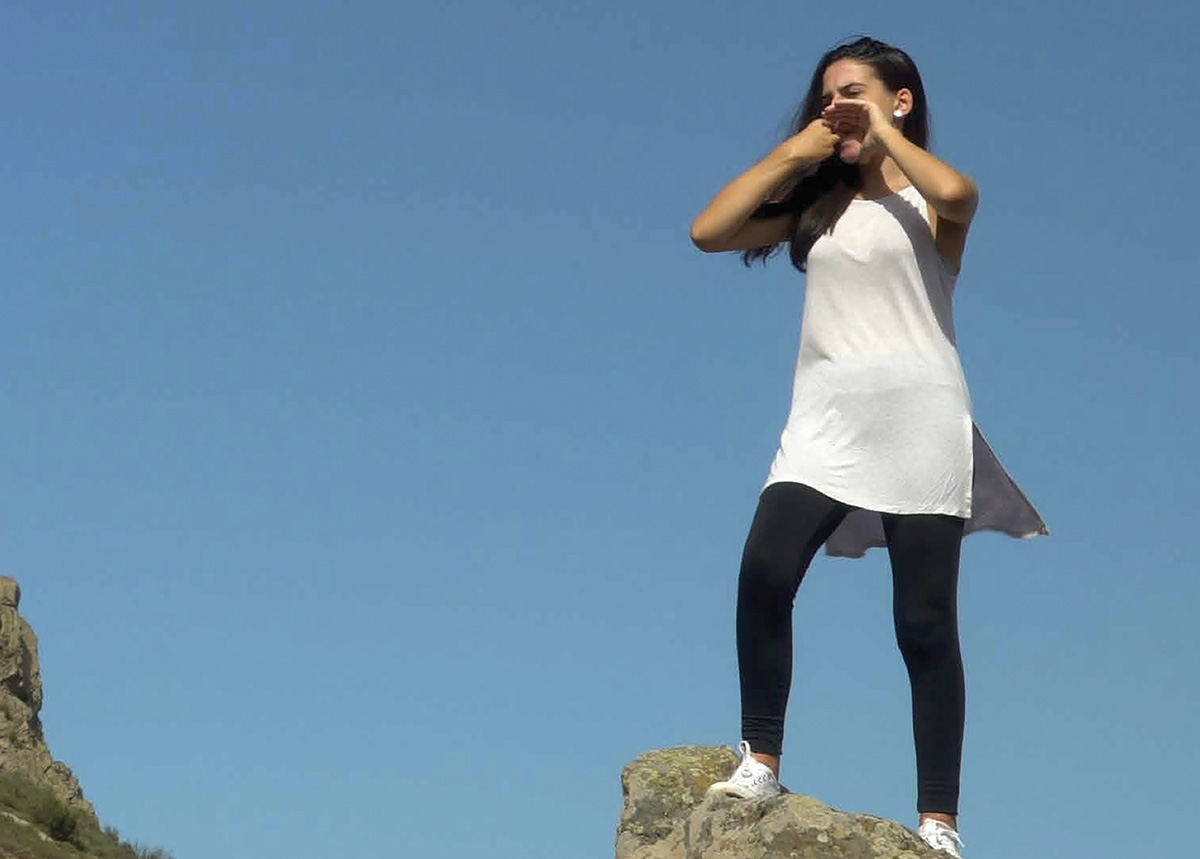
Marine Marine De Contes
Silabario
Documentaire | 4k | couleur | 14:30 | France | 0
Une île, un poème, un rêve. Disparition et réapparition d'une langue sifflée, le Silbo. Silabario raconte l'histoire et la transmission de ce patrimoine miraculé de l'île de la Gomera.
Réalisatrice et monteuse formée à l’ECAM (Ecole de Cinéma et d’Audiovisuel de Madrid), Marine de Contes travaille aussi bien en documentaire qu’en fiction et développe des projets de films et d’installations vidéo, abordant des thématiques écologiques et sociales. Membre de l’Académie des Beaux-Arts de France, résidente à la Casa de Velázquez en 2019-2020, elle y réalise le court-métrage « Silabario » en langue sifflée espagnole et y développe son projet de long-métrage. Son film précédent, « Les Proies », a été récompensé en 2018 du Prix Louis Marcorelles au Festival Cinéma du Réel Paris et d’une mention spéciale au festival Linea d’Ombra à Salerne. Il a également été diffusé dans de nombreuses salles de cinéma, centres d’arts ou festivals (Viennale, Sheffield, Lincoln Center...).
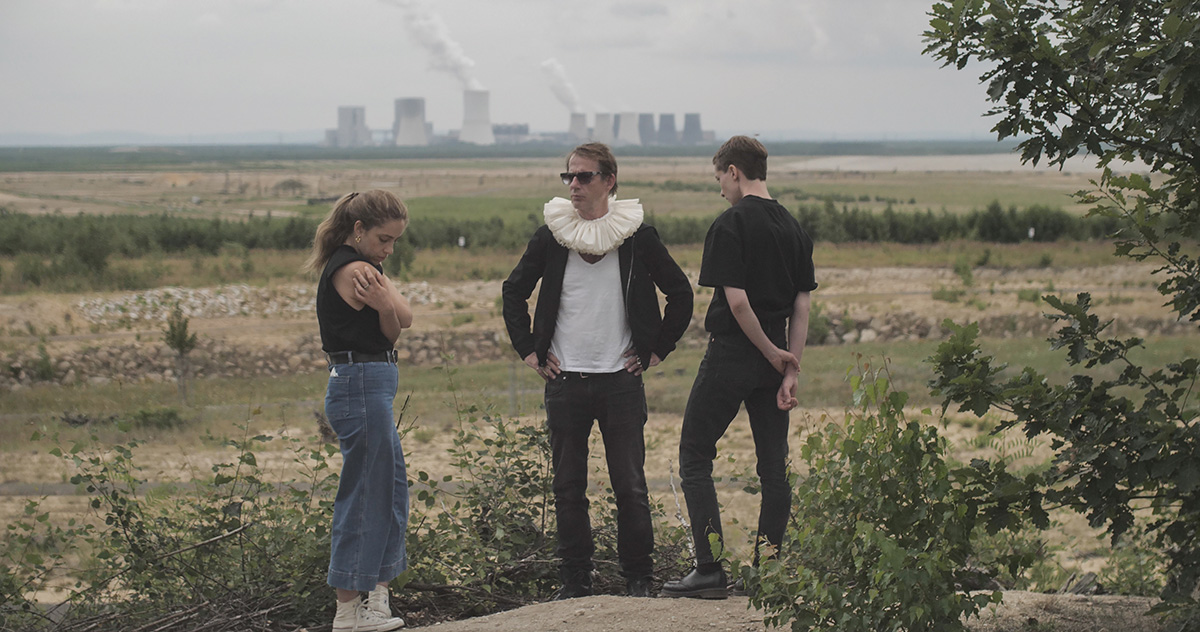
Filip Markiewicz
Euro Hamlet
Fiction expérimentale | mov | couleur | 20:0 | Luxembourg, Allemagne | 2021
Euro Hamlet is the latest project of theatrical creation directed by Filip Markiewicz in August 2021 in the immense Hall of the Telux site in Weisswasser in Germany, in collaboration with playwright Katrin Michaels, Working from the original text of Hamlet, Shakespeare's most popular and disturbing play, Filip Markiewicz creates a sort of concept with Euro Hamlet. He subverts the established rules of classic theatre and combines them with different artistic forms. The result proves to be a veritable performance, both in terms of the artists appropriating the original text and the visual and audio presentation of its content in space. In this contemporary tableau, Filip Markiewicz reflects certain references from the history of art and uses the concept of the «Play Within the Play» to engage with issues in the social and political realities of today's Europe, It raises the question: how to communicate the truths of everydav life in a context that is subject to codes of appearance? The preparation for the staging of Euro Hamlet included a shooting in July 2021 with the actors Leila Lallali, Marie Jung, Luc Feit and Joran Yonis in the region of East Germany and in Zgorzelec in Poland. A "mise en abyme" of Shakespeare's text in an organic setting that bears witness to European history, where the artist adresses the notion of territory beyond the experimental nature of this reading.
Filip Markiewicz (born in 1980, Esch / Alzette, Luxembourg) is a visual artist who expresses himself through various media such as drawing, painting, music, video and installation. Filip Markiewicz represented Luxembourg at the 56th Venice Biennale 2015 with the Paradiso Lussemburgo project. His long-term project Celebration Factory on contemporary Europe began in 2016 at the NN Contemporary Art Northampton and at the Theater Basel before it was continued in 2018 at the Casino Luxembourg - Forum d'Art Contemporain and in 2019 at the Center for Contemporary Art Derry-Londonderry and the Kunsthalle Osnabrück. In 2017 Markiewicz staged his performance Fake Fiction with diary texts by Oskar Schlemmer (publication Hyde Éditions) at Theater Basel for the official Art Basel program. Markiewicz received the Art Prize Bourse Bert-Theis in 2019 for his art music project Ultrasocial Pop. In 2020 Markiewicz shows his monographic exhibition Ultraplastik Rhapsody at the National Museum of Contemporary Art in Bucharest. For the Lausitz Festival 2020, Markiewicz directed, created the scenography and composed the music for the play ANTIGONE NEUROPA (Sophocles) in collaboration with the Staatstheater Cottbus. In february 2021 Filip Markiewicz presented the performance Ultrasocial Pop in the frame of the Rencontres Internationales Paris / Berlin. In August 2021 Markiewicz directed, created the scenography and composed the music for the installation and theater performance Euro Hamlet at the Lausitz Festival. Filip Markiewicz has been composing music for film, theater and installation under the name RAFTSIDE since 1999, with which he has also appeared in several international festivals.
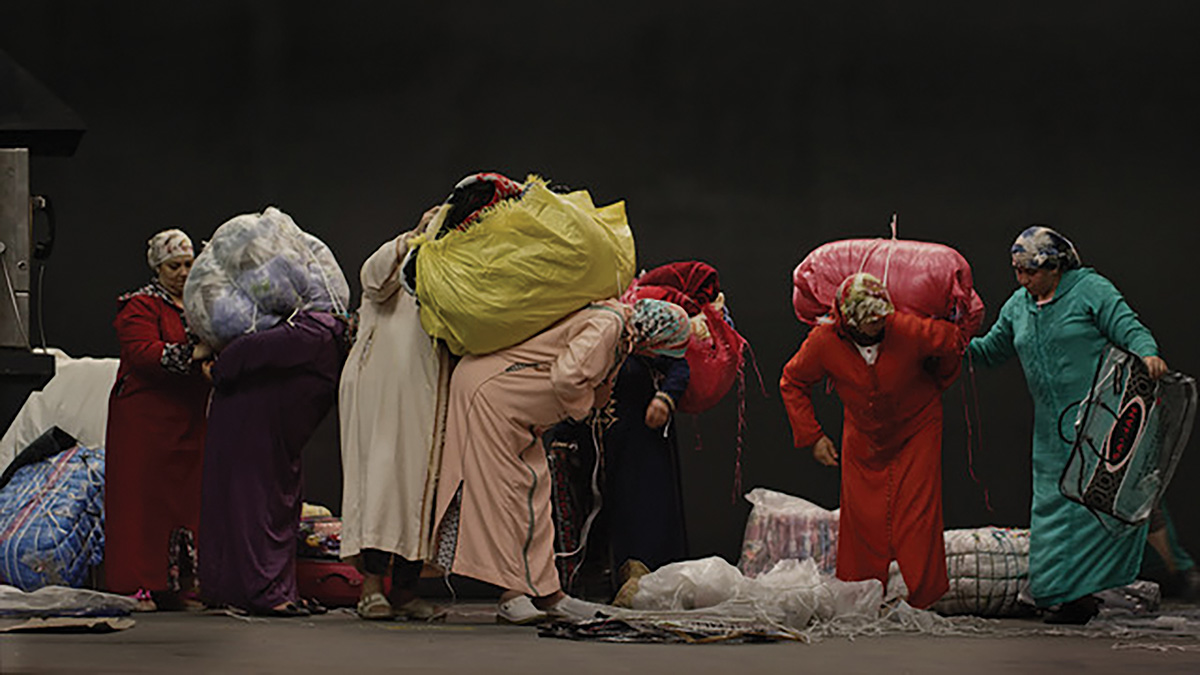
Randa Maroufi
Bab Sebta
Doc. expérimental | digital | couleur | 20:0 | Maroc, France | 2019
Bab Sebta est une suite de reconstitutions de situations observées à Ceuta, enclave espagnole sur le sol marocain. Ce lieu est le théâtre d’un trafic de biens manufacturés et vendus au rabais. Des milliers de personnes y travaillent chaque jour.
Ne?e en 1987 a? Casablanca. Diplo?me?e de l’Institut National des Beaux-Arts de Te?touan, de l’E?cole Supe?rieure des Beaux- Arts d’Angers (France) ainsi que du Fresnoy (France). Randa Maroufi s’inte?resse a? la mise en sce?ne des corps dans l’espace public ou intime. Une de?marche souvent politique, qui revendique l’ambigui?te? pour questionner le statut des images et les limites de la repre?sentation. Son travail qui se traduit essentiellement a? travers la photographie, la vide?o, l’installation, la performance et le son, a e?te? pre?sente? lors d’e?ve?nements d’art contemporain et de cine?ma majeurs tels que La Biennale de Marrakech en 2014, Les Rencontres de Bamako en 2015, le Festival international du film de Rotterdam en 2016, La Videonale Bonn en 2017, la Biennale de Sharjah au Liban en 2017, la Biennale de Dakar en 2018, la Biennale do Mercosul? au Bre?sil en 2018, etc. Son film Le Park a rec?u une vingtaine de prix et fait partie de la Collection National du CNAP (Centre National des Arts Plastiques). En 2017 – 2018, Randa Maroufi a e?te? membre artiste a? la Casa de Vela?zquez – l’Acade?mie de France a? Madrid.

Cal Mccormack
Agony to Ecstasy
Doc. expérimental | mp4 | couleur et n&b | 12:50 | Royaume-Uni | 2020
‘Agony to Ecstasy’ looks at the scope of the socio-addictive condition within Scottish people. It focuses on the relationship between pain and pleasure, between stress and relief and between entrapment and escape. The film in many ways, is a dissection of two spaces – euphoric clubbing and silent Scottish nature, offering a perspective on our need for salvation within both. Neurologically, there is very little difference between the brain addicted to something, as to when falling in love. As a result, the film fluctuates between these neurological and personal perspectives on addiction and connection – where their conflating and often paradoxical relationship are juxtaposed. The film is made with reflection as its key focus. Made during the middle of the first lockdown, it uses the collective state of withdrawal and loneliness to observe realities within clubs. A slow-motion strobe follows the film throughout, as a visual deconstruction of the joy, yet ghostly inhibition of the people in the shots. Vulnerability was key in Dej’s recollections – his words occupy the emotional worlds of mental health, stigma and the ecstasy of clubbing, without having a particular stance or opinion. Ultimately 'Agony to Ecstasy' looks beyond fixed stereotypes of addicts, and into the dependencies, shame and love between Scottish people.
Cal Mac is a visual artist working and living in Glasgow. Working between sculpture print and video, he explores themes of belonging and addiction through sociological, scientific and visual dialogues. His work often looks at clubbing and natural environments, to unravel truths about our current condition and need for connection. His work has been screened at Atlas Arts (skye), The Royal Scottish Academy (Edinburgh), Limerick Institute of Technology, and online for Lift off Festival, and Film and Video Umbrella. Following his first commission from Film and Video Umbrella in 2020, Mac has done residencies at Cove Park and Edinburgh Sculpture Workshop. In 2021 Mac was shortlisted for the Royal Scottish Academy Morton Award.
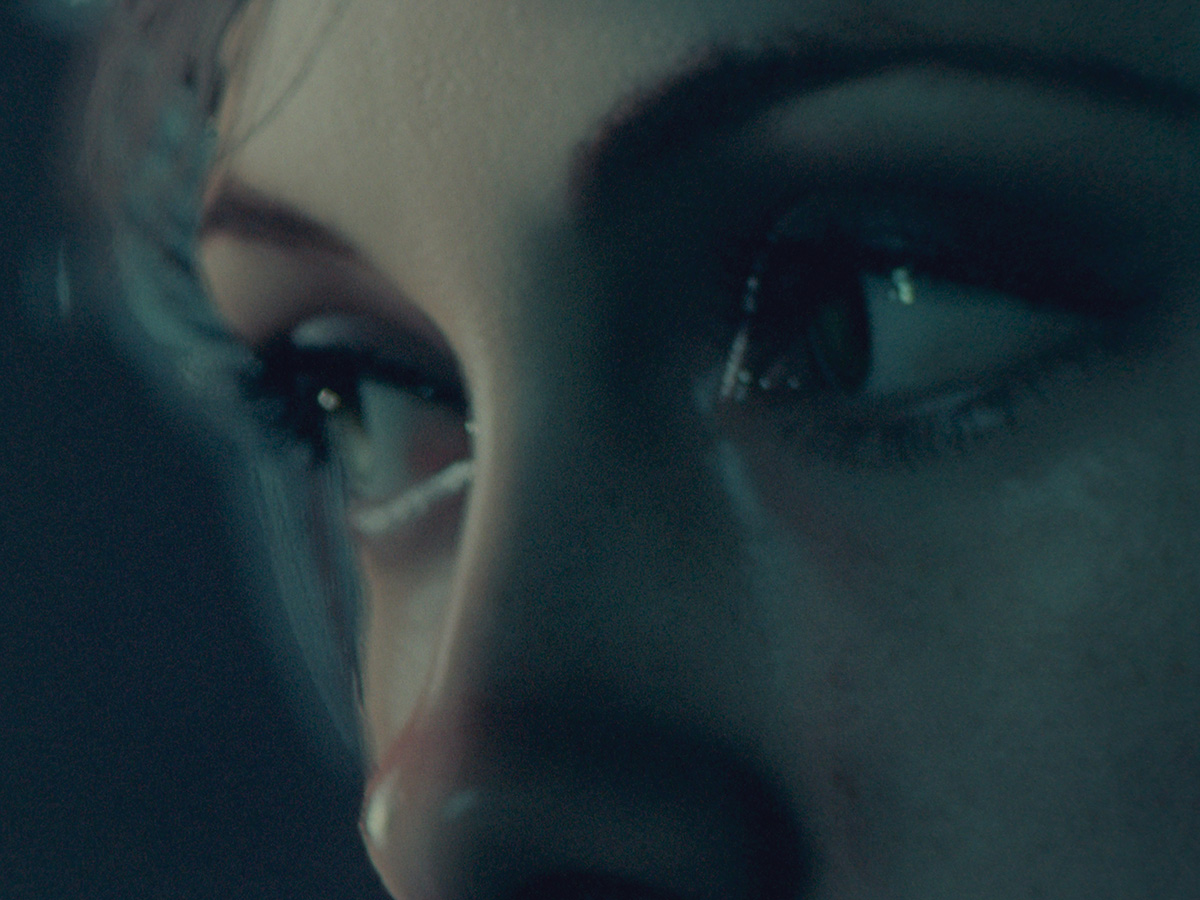
Ross Meckfessel
Estuary
Film expérimental | 16mm | couleur | 11:30 | USA | 2021
When you question the very nature of your physical reality it becomes much easier to see the cracks in the system. Estuary charts the emotional landscape of a time in flux. Inspired by the proliferation of computer generated social media influencers and the growing desire to document and manipulate every square inch of our external and internal landscapes, the film considers the ramifications of a world where all aspects of life are curated and malleable. As time goes on all lines blur into vector dots.
Ross Meckfessel is an artist and filmmaker who works primarily in Super 8 and 16mm film. His films often emphasize materiality and poetic structures while depicting the condition of modern life through an exploration of apocalyptic obsession, contemporary ennui, and the technological landscape. His work has screened internationally and throughout the United States including in Toronto International Film Festival, New York Film Festival, San Francisco Cinematheque’s CROSSROADS Film Festival, Internationales Kurzfilm Festival Hamburg, Sheffield Doc/Fest, and Curtas Vila Do Conde among others.
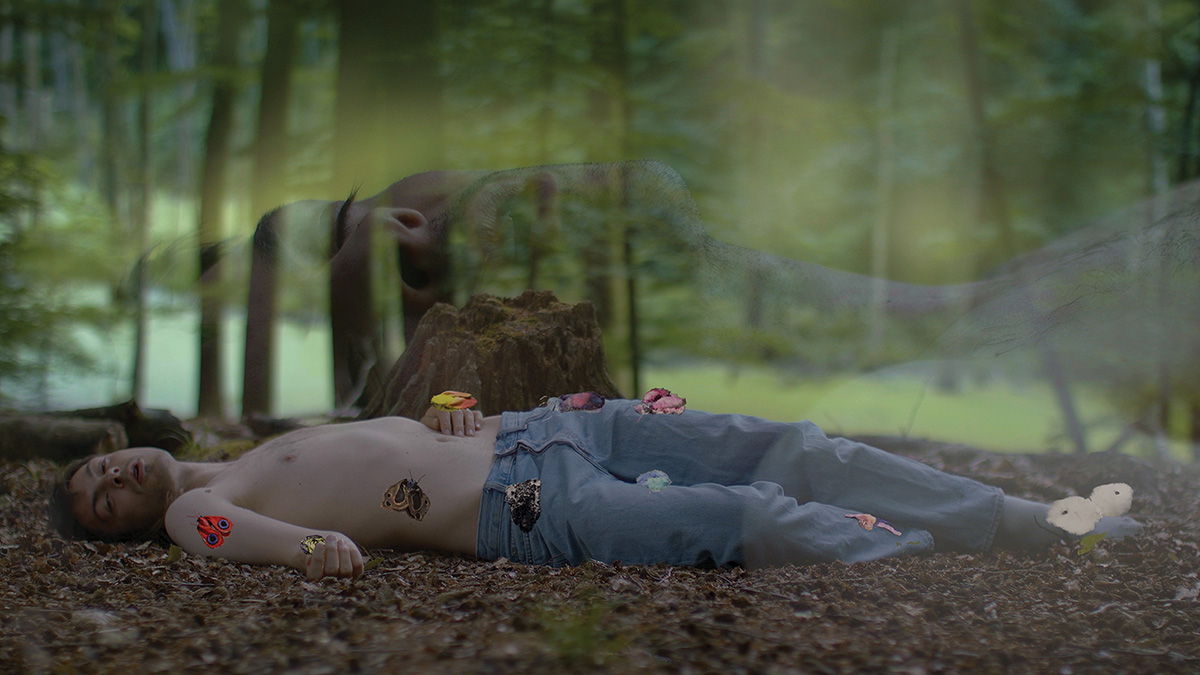
Kim Richard Adler Mejdahl
Hour of Moth (Etude no. II)
Vidéo | 4k | couleur | 11:10 | Danemark | 2020
A human being (the artist himself) lies half-naked on a forest floor, facing the viewer while gently singing. On his body rests a throng of colorful moths whose fluttering wings generate a melody attuned to the song. With its prolonged visual intro and lyrical song, Hour of Moth (Etude no. II) takes the form of a music video where Mejdahl himself is both the singer and songwriter. The work is a love song to the angel of the night—the moth—but also a yearning and sensual hymn to all nature. Mejdahls claims the geometric patterns on moth wings to be hidden warning messages from nature itself, but humans struggle to comprehend them. Hour of Moth (Etude. no II) thus looks upon the current climate crisis in which the human race feel detatched from Nature, while still searching for hope in the dark. This video art piece was made for Mejdal’s solo exhibition Liljegrotten (Lillith Grotto) at Overgaden Institute for Contemporary Art, Copenhagen (2021). The same year Hour of Moth (Etude no. II) was aqcuired by by The Museum of Contemporary Art (Museum for Samtidskunst), and The Danish Arts Foundation.
Copenhagen-based visual artist, filmmaker, and electronic music composer Kim Richard Adler Mejdahl was born in the Danish village Skælskør. With an educational background in fine arts Mejdahl has created a wide range of critically acclaimed artworks that interweave genres and media. In 2018 Mejdahl received The Jury’s Solo Award at Charlottenborg’s Spring Exhibition for his horror-musical documentary ODE - featuring the artist’s entire family that sing about their deceased abusive father. The movie was later aqcuired by The National Gallery of Denmark (Statens Museum for Kunst). Mejdahl’s largest production consists of his debut arthouse feature DAYS OF AL from 2019 - an experimental horror film starring the artist’s cousin and puppy dachshund as leading actors. Both movies come with its own soundtrack released by the artist’s music alias Kim Kim. This summer Mejdahl will release Liljegrotten - a music album and Denmark’s largest collectively produced sound piece made entirely out of audience sound recordings generated at the artist’s latest solo exhibition at Overgaden Institute of Contemporary Art.
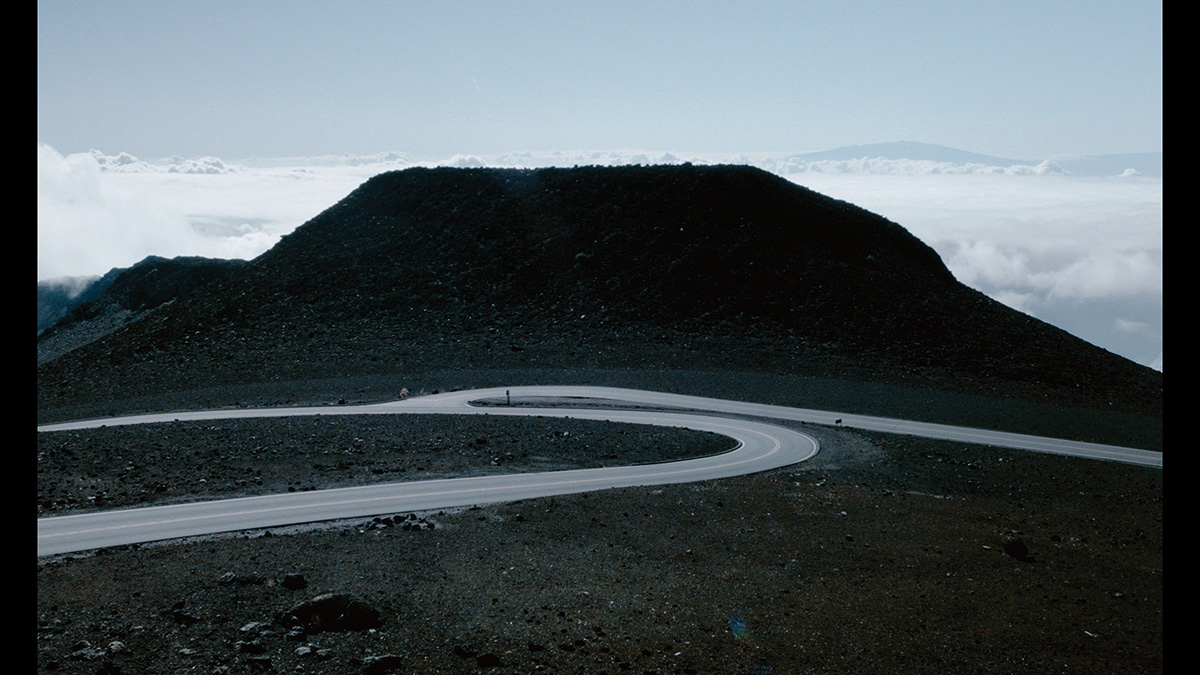
Sebastian Mez
DIE GROßE LEERE
Doc. expérimental | mov | couleur | 86:0 | Allemagne | 2021
On a mysterious crackling magnetic tape, a “viewer” discovers shaky, low-definition images, which seem to have been shot during a moon landing. It is as if we had just landed on another planet, the desert—or rather deserted—landscapes of which, filmed in static shots, seem nonetheless familiar to us and encircled by a worry-ing strangeness. Traces of the past remain: rusty machines, pylons, human artefacts that multiply as the cameraman approaches what were towns, now plunged into absolute and silent desolation. Although Sebastian Mez (Metamorphosen, VdR 2013) shot the images of his new film before the pandemic that immobilised a large part of the world last spring, The Great Void is inevitably enshrined within the dystopic imagination disseminated across consciences by this global event. Composing a series of magnificently framed scenes, emptied of all living presence, the German filmmaker observes without blinking the agony of our civilisation. No more, no less.
Sebastian Mez is a filmmaker, video- and soundartist. His work has been shown at countless festivals worldwide and have won numerous awards. He studied film directing at Filmakademie Baden-Württemberg in Ludwigsburg, Germany. His short film CLEAN UP was shown at more than 40 international film festival and won several prices. Among others EIN BRIEF AUS DEUTSCHLAND won best middle length competition at Visions du Réel in Nyon in 2011. METAMORPHOSEN was his first feature length film, which premiered at the Berlinale 2013, followed by numerous festivals and awards worldwide. His experimental work SUBSTANZ was nominated for the Filmpreis für Filmkunst of the Neue National Gallerie in Berlin 2015. Sebastian lives and works in Berlin.
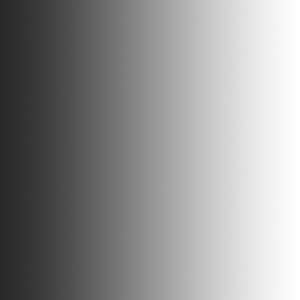

Lauren Moffatt
Image Technology Echoes
VR expérimental | 0 | couleur et n&b | 5:30 | Australie, Irlande | 2021
In the immersive experimental fiction Image Technology Echoes by Lauren Moffatt, we enter a quiet gallery inside a cavernous museum space. The gallery is empty, except for an older man and a younger woman. The pair are having a stilted conversation about the painting they are looking at: a large expressionist canvas depicting a stormy ocean. This odd exchange seems to circulate indefinitely… unless we step inside the body of one of the two figures and are transported to their mental space. Each interior is a messy room with its own life. In this place, the person’s doppelgänger homunculus is reciting their stream of consciousness that the artist generated with a neural network, and the painting appears very different from what we just saw in the gallery.
Lauren Moffatt is an Australian artist working between video, performance and immersive technologies. Her works, often presented in multiple forms, explore the paradoxical subjectivity of connected bodies and the friction at the frontiers between digital and organic life. Lauren's works usually take the form of speculative fictions and environments, which are conceived using a mixture of obsolete and pioneering technologies and often occupy both physical and virtual space. Lauren completed her studies at the College of Fine Arts (AU), Université Paris VIII (FR), and at Le Fresnoy Studio National des Arts Contemporains. Lauren's works have been screened and exhibited most recently at Le Centre Pompidou (FR), Le Grand Palais Éphémère (FR) Hartware MedienkunstVerein (DE) Palais de Tokyo (FR), Villa Medici (IT), UNSW Galleries (AU), Daegu Art Museum (KOR), Museum Dr. Guislain (BE), SAVVY Contemporary (DE), FACT Liverpool (UK) The Sundance Film Festival (US) ZKM (DE), Q21 Freiraum (AT) and at La Gaïté Lyrique (FR). She lives and works between Berlin (DE) and Valencia (ES).
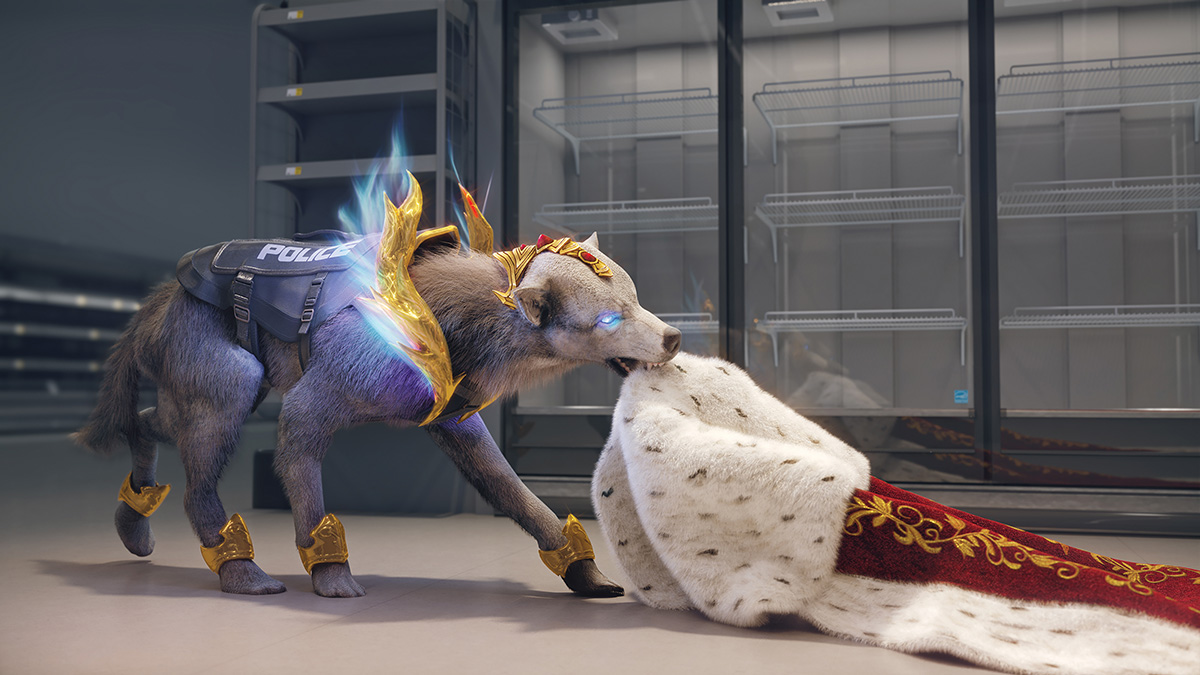
Jonathan Monaghan
Den of Wolves
Vidéo | 4k | couleur | 19:0 | USA | 2020
Den of Wolves is a seamlessly-looping video installation drawing on a range of references to weave a new multi-layered mythology. The work follows three bizarre wolves through a series of increasingly surreal retail stores as they search for the regalia of a monarch. Composed of one continuous camera shot, the work is an immersive, dreamlike journey drawing connections between popular culture, institutional authority and technological over-dependence.
Jonathan Monaghan is an award-winning visual artist who works across a range of media, such as prints, sculpture, and animation, to produce otherworldly objects and narratives. Drawing on wide-ranging sources, such as historical artworks and science fiction, his fantastical pieces uncover subconscious anxieties associated with technology and consumerism. Monaghan’s work has been exhibited at the Sundance Film Festival and the Palais de Tokyo in Paris, among other major venues. He has been featured in several media outlets, including The New York Times, Vogue Italia, and The Washington Post. His work has also been acquired by numerous public and private art collections, including The Crystal Bridges Museum of American Art and the Washington, D.C., Art Bank Collection.
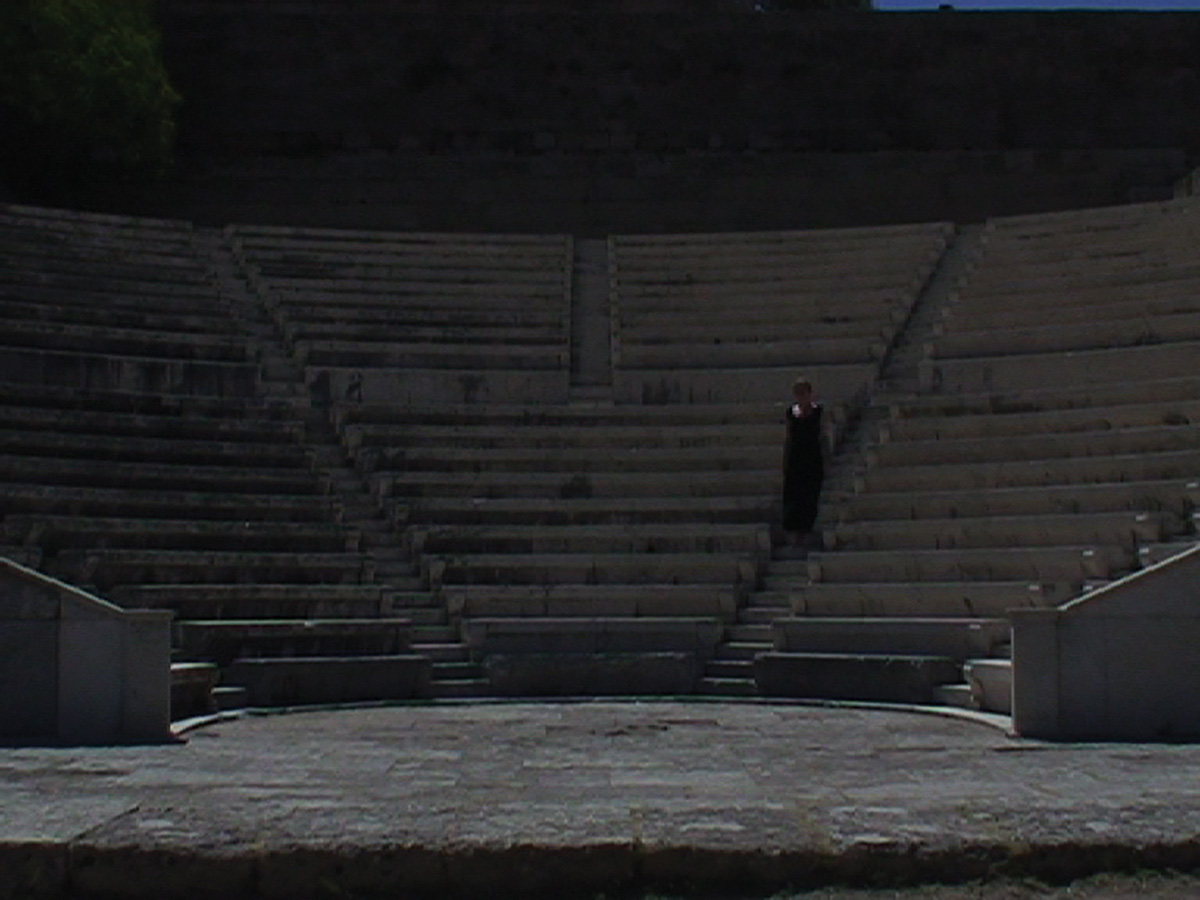
Muriel Montini
Je suis une héroïne périphérique
Fiction expérimentale | mov | couleur et n&b | 85:0 | France | 2021
S’enfonçant dans l’anéantissement qui les attire, ils ne craignent pas de se retourner sans fin pour raconter. (Susan Howe) Je reprends les rushes de certains de mes films. Autobiographie, autofiction, autofabulation.
Muriel Montini a fait des études de cinéma. Elle vit et travaille à Paris. Depuis 2000, elle a réalisé plusieurs films qui sont projetés dans différents festivals internationaux (Hamburg International Short Film Festival, FID de Marseille, European Media Art Festival Osnabrueck…) et diverses institutions (Musée du Jeu de Paume, Anthology Film Archives New York, ImagesPassages...).
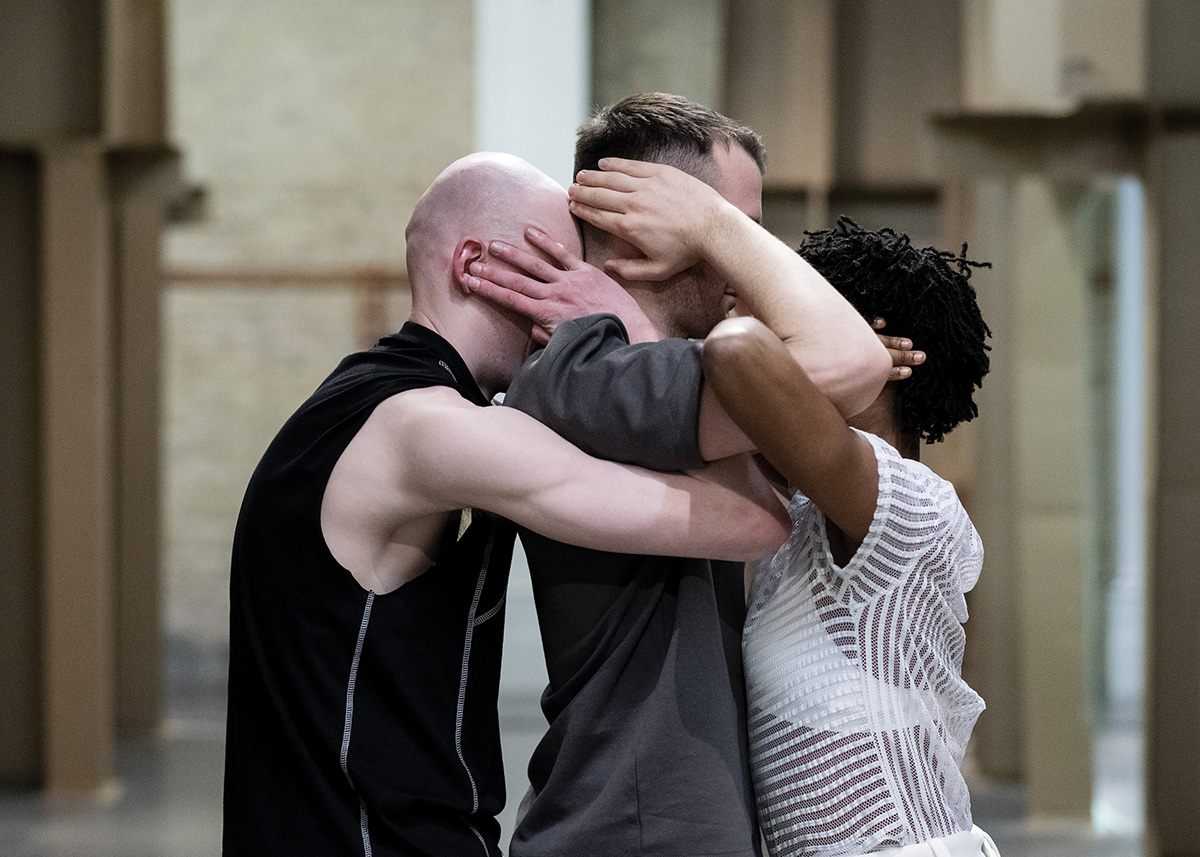
Joe Moran
Materiality Will Be Rethought
Vidéo | hdv | couleur | 29:26 | Royaume-Uni | 2020
Materiality Will Be Rethought by British-Irish artist and choreographer Joe Moran was developed as a site-specific live performance before being reimagined as a film work. The work navigates dance’s potential to animate and disrupt architectural space, the physicality of the dancer’s voice and the moving body as a site of political unrest and complex subjectivities. Materiality Will Be Rethought was commissioned by Whitechapel Gallery, London, in dialogue with the exhibition Carlos Bunga: Something Necessary and Useful (on display at the gallery 21 Jan – 6 Sep 2020). It is performed by dancers Temi Ajose-Cutting, Thomas Heyes (Blackhaine), Sean Murray and Eve Stainton, and created in collaboration with editor Sue Giovanni and cinematographer Alana Mejía González.
Joe Moran is a British-Irish artist and choreographer based in London with a wide-ranging practice incorporating theatre and gallery performance works, critical writing, curatorial projects and drawing. His work centres the body and embodied presence as a site of complex subjectivities and political unrest, with queering frequently deployed as its principal critical strategy. His work is informed by a background in improvisation and experimentation, and a fascination with the problems and opportunities of formal choreographic composition and notions of expanded choreography. Joe is Artistic Director of Dance Art Foundation through which his performance and curatorial work is produced and has worked internationally as a dancer with choreographers Deborah Hay (USA), Stina Nyberg (Sweden) and Siobhan Davies (UK) amongst others. Recent commissions and performances include Whitechapel Gallery (2020), Sadler’s Wells (2019), Nottingham Contemporary (NottDance, 2019), The Lowry Galleries (2019), London Contemporary Dance School (2019), Wysing Arts Centre (2018), Bluecoat (2018) coinciding with the Liverpool Biennial, Kettle’s Yard (2018), Sadler’s Wells (2017), Delfina Foundation (2016), ICA (Block Universe/ fig-2, 2015) in collaboration with Eva Rothschild and David Roberts Art Foundation (Frieze Art Fair, 2014). Notable collaborations include with composer Kaffe Matthews, editor Sue Giovanni, visual artists Eva Rothschild, Carlos Bunga and Magali Reus, and dancers Temitope Ajose-Cutting and Andrew Hardwidge. Joe contributed a chapter to the publication?Who Cares? Dance in the Gallery & Museum, wrote Materiality Will Be Rethought, an essay on dance and the exhibition space for the Whitechapel Gallery Carlos Bunga exhibition catalogue and Nothing About Us Without Us, a commissioned article on artist advocacy published by Siobhan Davies Dance in its inaugural Material journal.
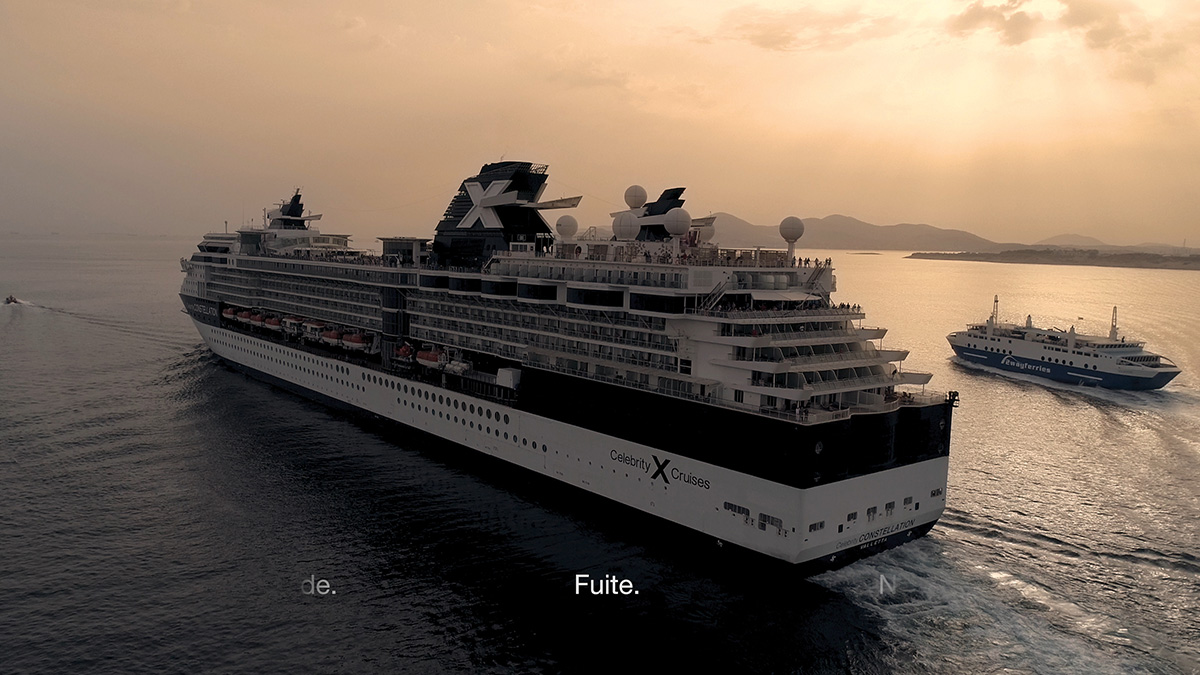
Armand Morin
Les Oiseaux
Vidéo | 4k | couleur | 10:34 | France, Belgique | 2019
La vidéo Les oiseaux a été créée suite à l’invitation à exposer à Memento, centre d’art installé dans un ancien monastère carmélite à Auch (32). Les religieuses y vivaient recluses et silencieuses, la plupart du temps confinées dans leurs cellules exiguës. Les traces de cette histoire dans le bâtiment m’a incité à me poser la question de l’imaginaire spatial de ces personnes isolées, lié à leur vie d’avant ou leurs fantasmes. J’imagine un effritement de la mémoire des lieux qui chaque jour perdent un peu plus de leur détails et définition. Ainsi la voix off, qui défile sous forme de texte comme une voix intérieure, commence par décrire ce monde silencieux, l’isolement. Sous forme de quête ou de punition. Les images de la recluse et de l’ermite se croisent pour assez vite amener au thème de la fuite. Fuite de l’humain face à ses responsabilités, fuite en avant dans le divertissement et l’usure des ressources jusqu’à finalement disparaître. Cette voix off, c’est celle d’une humanité couarde et avide qui raconte son histoire par bribes depuis une sorte d’au-delà. Les images (tournées en Grèce, France et Belgique) montrent des lieux d’exploitation des ressources naturelles et énergétiques, de production industrielle de nourriture, des infrastructures de mobilité et des moyens de transports plus ou moins opérants, ainsi que des sols nus et inhospitaliers. Il y a aussi quelques nids et objets trouvés dans les greniers du monastère qui tournent sur un plateau comme des objets de télé-achat. C’est un travail profondément pessimiste et mélancolique qui regrette l’effondrement à venir. Il pose la question de la culpabilité face à cette catastrophe imminente, de la répartition des responsabilités. Il traduit aussi un questionnement personnel mais partagé par beaucoup sur les moyens de s’organiser pour les années à venir et tenter de s’adapter, de prendre soin de soi, des autres et de ce qui reste.
J’ai étudié les Beaux-Arts à Nantes, dont j’ai été diplômé en 2007. C’est pendant ces études que j’ai commencé à m’intéresser aux paysages modelés par l’homme et leur artificialité, la présence du décor dans notre environnement quotidien, au collage et au montage comme moyen de créer des tiers lieux, au rapport entre documentaire et fiction, à la consommation de l’espace à travers les loisirs et le tourisme. J’ai ensuite profité d’une bourse post-dîplôme de cette même école pour séjourner 1 an à Miami, afin de poursuivre mes recherches. J’y ai tourné des vidéos qui ont pour point de départ l’observation des emprunts culturels et stylistiques dans l’architecture de la ville (Pardon our Dust et Le Monastère Espagnol). La même année (2009), j’ai été lauréat du Prix des Arts Plastiques de la ville de Nantes. Fin 2010, j’ai intégré le Fresnoy à Tourcoing et réalisé Opa-Locka will be beautiful, un “conte documentaire”, sur une banlieue de Miami construite dans un style des Mille et Unes Nuits dans les années 1920 avant de devenir un ghetto afro-américain rongé par le crack dans les années 1980. Pour la seconde année du cursus, j’ai créé Panorama 14, un diorama de science fiction dans lequel des maquettes d’architecture et de canyon se retrouvent plongées dans une véritable tempête de sable. Pour ces deux projets, on retrouve mon intérêt pour les paysages extrêmes, les collages spatio-temporels, les faux-semblants et un rapport ambiguë entre réalité observable et récit. En 2014, à l’invitation du Festival Hors-Pistes au Centre Pompidou, j’ai proposé La dérive des documents, une conférence performée, une forme spectaculaire autour de sources documentaires liée à mes travaux précédents. À la fin 2014, j’ai réalisé La terre vue du ciel ma première exposition personnelle à Tlön (Nevers), dans laquelle la vidéo s’intègre à un décor qui transforme le lieu. On retrouve ce type d’installations ou de mises en scène immersives dans d’autres expositions personnelles, comme On top of the Lake (à Stadio, Vevey en 2015) ou Le Grand Théâtre (à Silicone, Bordeaux en 2016). En 2015, je suis devenu papa, ce n’est pas rien... Juste avant, j’ai participé à deux résidences, Fieldwork à Marfa (Texas) et au centre archéologique gallo-romain de Bibracte qui me permettront de réaliser la vidéo The Promised Lawn (2016) où se dessinent les conséquences possibles de l’épuisement des ressources planétaires par notre civilisation. Cette vidéo aborde des thématiques écologiques et économiques que l’on retrouve régulièrement dans mon travail depuis. Les formes et produits générés par les industries du tourisme et des loisirs est également un sujet de travail récurent. Les problématiques liées aux déchets, rejets et résidus sont aussi de plus en plus présentes. En 2019, j’ai réalisé la vidéo Les Oiseaux, tournée en Grèce, en France et en Belgique, qui poursuit sur le mode du récit anticipatif des interrogations sur le devenir de l’espèce humaine sur une planète surexploitée. Depuis 2020, je travaille notamment à des nouveaux projets vidéo qui se concentrent sur des paysages crées par les activités d’extraction et de production, en observant plus précisément les rejets et résidus qu’elles produisent.

Arjuna Neuman, Denise Ferreira da Silva
Soot Breath // Corpus Infinitum
Doc. expérimental | 4k | couleur | 40:0 | Canada, USA | 2021
Soot Breath / Corpus Infinitum is a film dedicated to tenderness. It reproduces a radical sensibility learned from listening to the blues, from listening to skin, to heat, and from listening to echoes, listening itself. Soot Breath // Corpus Infinitum is a newly commissioned film and installation by Arjuna Neuman and Denise Ferreira da Silva. Against and instead of apprehension, it fosters an image of existence in which attention twins the gentleness of touch as recalled by haptic and sonic expressions.
Arjuna Neuman is an artist, filmmaker, and writer. As a writer he has published essays in Relief Press, Into the Pines Press, The Journal for New Writing, VIA Magazine, Concord, Art Voices, Flaunt, LEAP, Hearings Journal, and e- flux. He studied at California Institute of the Arts. He works with the essay form with a multi-perspectival and mobile approach where ‘essay’ is an inherently future-oriented and experimental mode, becoming the guiding principle for research and production, which shifts between the bodily, haptic, and affective through to the geopolitical, planetary and cosmological. Denise Ferreira da Silva is a practicing artist and an academic - Director and Professor at the Social Justice Institute-GRSJ at the University of British Columbia. She is the author of Toward a Global Idea of Race (2007), A Dívida Impagavel (2019), and co-editor of Race, Empire, and the Crisis of the Subprime (2013). Her several articles have been published in leading interdisciplinary journals, such as Social Text, Theory, Culture & Society, Social Identities, PhiloSOPHIA, Griffith Law Review, Theory & Event, The Black Scholar, to name a few. Her work addresses the ethico- political challenges of the global present. She is a member of several boards including Haus de Kulturen de Welt (Berlin), International Consortium for Critical Theory Programs and the journals Postmodern Culture, Social Identities, and Dark Matter.
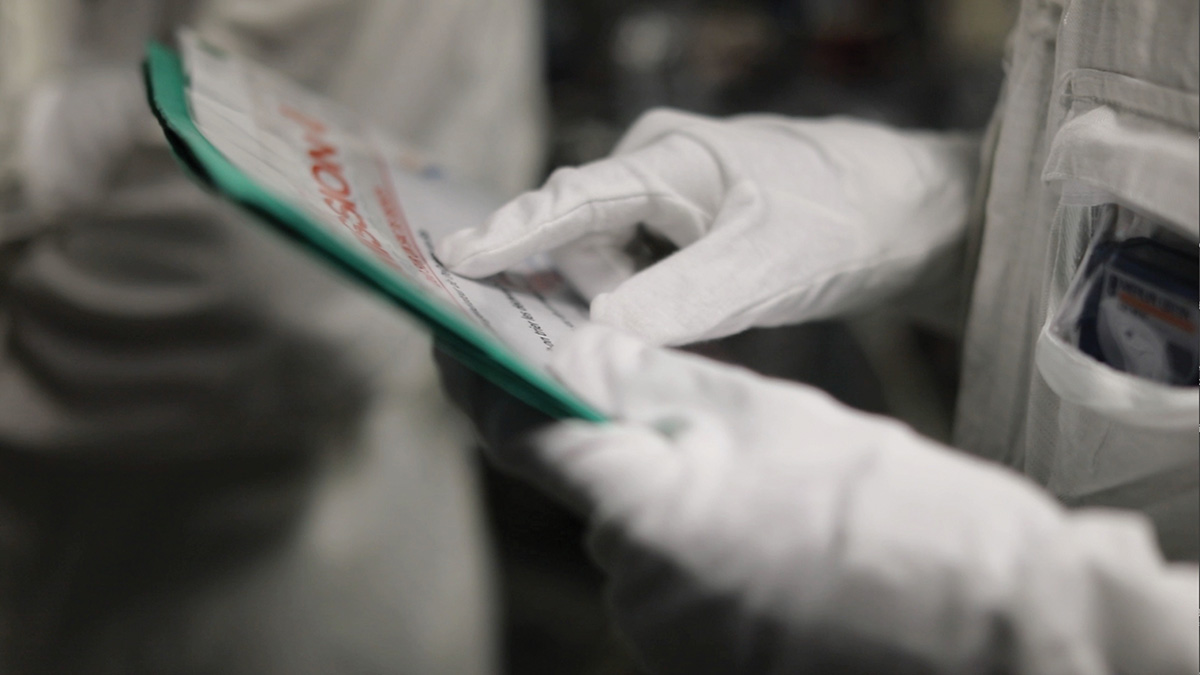
Natacha Nisic
Saint-Désir l'Exil
Vidéo | mov | couleur | 9:15 | France | 2020
Au coeur de Saint-Désir l'Exil se trouve une piscine. Au coeur de la piscine se trouvent les corps nocifs. A côté de la piscine, ma maman vit ses derniers instants sous le soleil.
Natacha Nisic,born in 1967 in France. Studies at Ecole Nationale Supérieure des Arts Décoratifs of Paris (1986-90) and at the Deutsche Film und Fernseh Akademie of Berlin (1989-91), and at the Fémis, Paris. Natacha Nisic continually explores the invisible, even magical relationship between images, words, interpretation, symbol and ritual. Her work interweaves links between stories, accounts of the past and the present, to reveal the complexities of the relationship between what is shown and what is hidden, the spoken and the unspoken. Her fixed and moving images function as substrata of memory, memory torn between its value as proof and its loss, and are all statements about the status of images and the possibilities of representation. She exposed in France, Japan, Italy, Germany, Spain, United Kingdom, Korea and Argentina. Her most notable personal exhibitions in Paris (France) are Haus/raus-aus (Le Plateau, Frac Ile-de-France), Effroi (Musée Zadkine), La porte de Birkenau (Mémorial de la Shoah) Nord, Carmel (Centre Georges Pompidou), and Echo (Galeries nationales du Jeu de Paume). Abroad : KW Complex (Atelier Hermès, Seoul, Korea), Trying to land (MACRO, Rome, Italy), Loop Barcelona (Dominique Fiat, Barcelone, Spain). She has participated in several group exhibitions in France and abroad, such as Regard fatigué (with Christophe Marchand-Kiss, Schloß Solitude, Stuttgart, Germany, 1998), Contemporary Utopia (Centre d’art contemporain Letton, Riga, LT, 2001), Tempered Ground (Museum of Garden History, Londres, UK, 2004), elles@centrepompidou, les artistes femmes de la collection du Mnam ( Centre Georges Pompidou, FR, 2009), Yebisu international festival for new vision tokyo (Metropolitan Museum of Photography, JP, 2010), and Immigrantes in Arte Contemporeano (Munfret, curator Diana Wechsler, Buenos Aires, AR, 2015). She won almost 10 grants, among the Arbeitstipendium (Senatsverwaltung für Wissenschaft, Forschung und Kultur, Berlin, Germany). She also stayed at the Villa Medici (Rome, Italy, 2007) and two times at the Villa Kujoyama Duo (Japan, 2001 ; 2016).
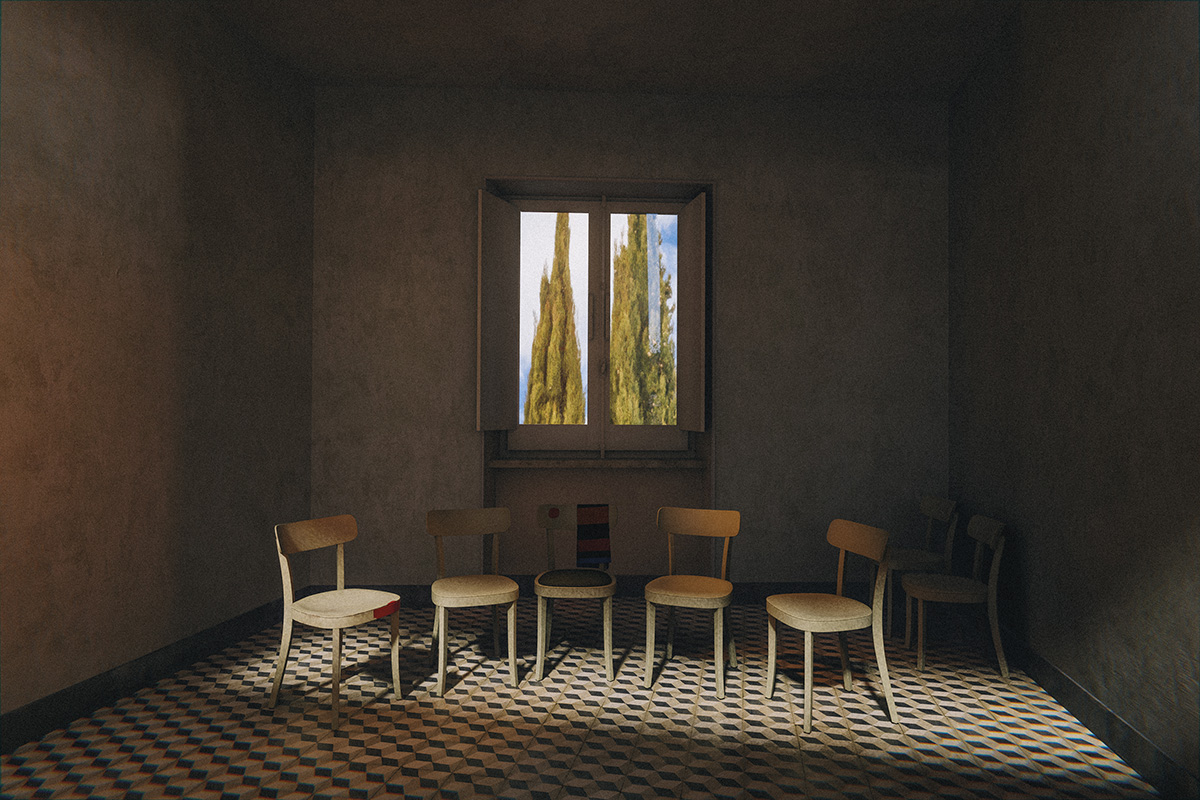
Rossella Nisio
The Price for Fire
Animation | hdv | couleur | 18:40 | Italie, Pays-Bas | 2021
Against the backdrop of a vacant house, two voices pursue the shadows of 1968 and its aftermath: Drifter, brooding over the revolution that never came, and his unnamed comrade, who addresses him from the ranks of a funeral procession. The film is based on the events surrounding the death of M.A., a left-wing activist.
Rossella Nisio is an Italian visual artist based in Rotterdam. She has a background in the theory of cinema and performing arts at the University of Roma Tre and holds an MA in Fine Art and Design from the Piet Zwart Institute in Rotterdam. Her moving image works have been shown in festivals in the Netherlands and abroad and are included in the collection of the EYE Film Institute. She is a resident artist at the Rijksakademie in Amsterdam in 2021-22.
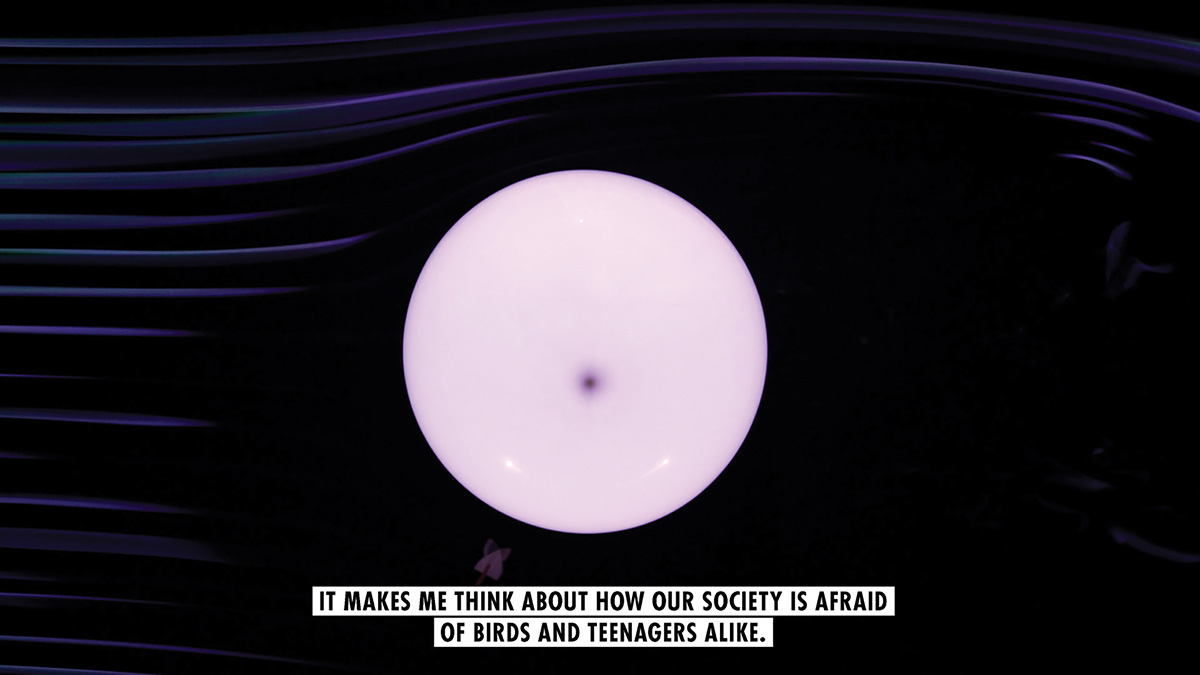
Christof Nuessli
Visibility
Vidéo | mov | couleur | 9:3 | Suisse | 2020
A stream of consciousness takes us from a society that is afraid of teenagers and birds to drone pilots wearing bomber jackets to the question of whether smoke can make change visible. Should we hold on tight or let ourselves be blown by the wind?
Christof Nüssli (*1986, Zurich) is a visual artist, whose interdisciplinary approach involves video, sculpture, installation, photography and writing. His work has been exhibited in various institutions and screened at international film festivals. In 2020, Nüssli received a Master of Fine Arts from the Glasgow School of Art. He works in Zurich and Glasgow.
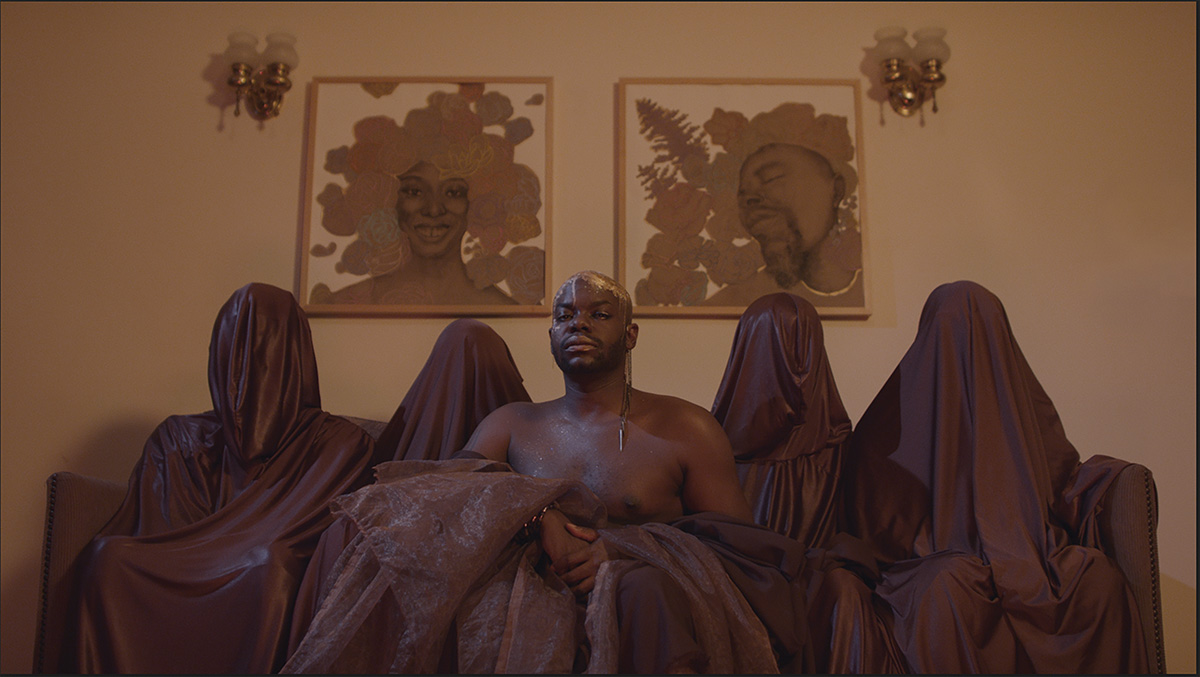
Jaamil Olawale Kosoko, Ima Iduozee
Chameleon (A Visual Album)
Vidéo | hdv | couleur | 21:16 | USA, Allemagne | 2020
Chameleon is an experimental visual album inspired by the radical queer feminist genre of the “Biomythography” which refers to Audre Lorde’s foundational work entitled Zami: A New Spelling of My Name published in 1982. It combines history, biography, and myth, and holds a literary perspective that serves as a guiding light for complex narrative storytelling rooted in a queer, Black self-defined, feminist imagination.
jaamil olawale kosoko, (they/them) of Yoruba and Natchez descent is an award winning filmmaker, movement artist, poet, and facilitator whose work in embodied poetics and performance has been presented internationally and is rooted in the intergenerational passage of Black feminist knowledge, queer theories of the body, and sacred rituals of intimacy & wellness as a means to craft perpetual modes of freedom, healing, and care where/when/however possible. Their new book, Black Body Amnesia: Poems & Other Speech Acts was released in Feb. 2022. jaamil is the recipient of a MacDowell Fellowship, PEW Fellowship in the Arts, Princeton Arts Fellowship, 2019 Red Bull Writing Fellowship, and a 2017 Cave Canem Poetry Fellowship. Their works in poetry, curation, performance and education have taken them all around the world having performed and taught in over 21 countries on 5 continents including Morocco, South Africa, Germany, Finland, Sweden, UK, Norway, Switzerland, Canada, Mexico, Japan, and throughout the Americas. Of Nigerian and Finnish descent, Ima Iduozee is a choreographer, director, dancer and filmmaker based in Helsinki, Finland. His debut solo work, This is the Title, premiered in 2012 and went on to garner international acclaim, touring in 15 countries across Europe, North America and Asia. In 2015 the annual honorary prize of the Finnish Critics Association, Critics Spurs´, was given to Iduozee, as an acknowledgement for the best artistic breakthrough of the year. Earlier commissions include works for The Finnish National Theatre, Aalto International, Stockholm City Theatre, Helsinki City Theatre, Finnish National Opera and Helsinki International Film Festival. In 2016 Iduozee graduated from the Arts University of Helsinki (Theatre Academy).

Vivian Ostrovsky
Son chant
Doc. expérimental | mov | couleur et n&b | 12:46 | France, USA | 2020
Visionnant des mini DV filmés ces dernières années, je suis tombée sur des images tournées comme nous nous quittions après un dîner à Montparnasse, Chantal Akerman Sonia Wieder-Atherton et moi. J’ai décidé d’en faire un petit film en hommage au travail de son de Chantal, en particulier à sa collaboration avec la violoncelliste Sonia Wieder-Atherton avec laquelle elle a fait plus de 20 films. Et, comme New York, Paris, Moscou sont des lieux que nous avions toutes les trois en commun, j’ai mêlé quelques-unes de mes images aux siennes.
Née à New York, aux États-Unis, Vivian Ostrovsky fait ses études secondaires à Rio de Janeiro, puis poursuit des études supérieures à Paris-Sorbonne, en psychologie ainsi qu’en cinéma. Elle commence alors son activité au sein de Ciné-Femmes International, organisme de diffusion luttant pour le féminisme et sa visibilité. Devenant elle-même cinéaste en 1980, elle abandonnera le militantisme. Associée au cinéma expérimental pour son approche de l’animation, du film-journal et de la notion de collage, Vivian Ostrovsky a, à ce jour, consacré plus de 40 ans à parcourir le monde, à embrasser d’un regard curieux et généreux, doublé d’un sens de l’humour taquin et ironique, le quotidien, la famille, le cinéma et l’histoire du cinéma. Elle vit actuellement aux États-Unis. Son travail a fait l’objet de nombreuses rétrospectives et d’expositions dans les musées et les festivals à travers le monde.
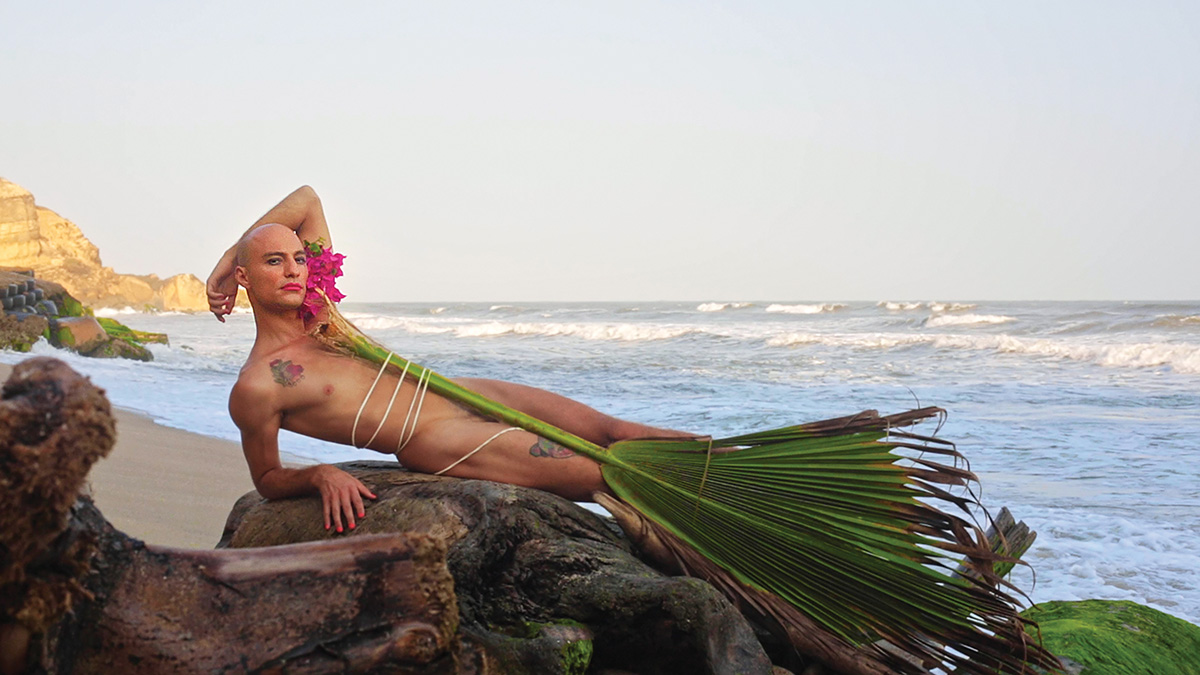
Simon(e) Jaikiriuma Paetau, Nadia Granados
Mojana
Vidéo | mov | couleur | 18:9 | Allemagne, Colombie | 2021
"Mojana" is an associative re-imagining of a Colombian myth and traditional song. A mermaid-monster, who is desired and punished: the man-eating, seductive Mojana. Agressions against this free and rare spirit are justified by obsessive love and desire. The film denounces the naturalized violence against this mythical female creature and reappropiates her as a symbol of trans-feminine resilience. Kinematic bodies and animal-human hybrids. An absent body, which returns into representation. A history of dissident bodies who resist dying in a necropolitical system.
Simon(e) Jaikiriuma Paetau is a German-Colombian artist. Their artistic projects are located between film and performance, dealing with queer cultures and decoloniality. Simon(e) studied Media Art at the KHM Cologne and Film at the EICTV Cuba. Simon(e)’s films have premiered at Documenta14, Cannes Directors Fortnight, MoMA, Rotterdam and has been awarded the prize for Best Director at the International Cartagena Film Festival Colombia and won the first prize (MuVi Award) at kurzfilmtage Oberhausen, among others. Simon(e)’s performance works have premiered at Studio ? of Maxim Gorki Theater, Ballhaus Naunynstrasse, Hebbel am Ufer, as well as the 11th Berlin Biennale. Nadia Granados Using my body in combination with multi-media technologies, my artistic practice illuminates the relationships between the representation of state violence in mainstream media, institutionalized machismo, heterosexual pornography, and violence against women. My work is both performative and technological, both art and activism, and a mix of cabaret, public intervention, and video transmission. Five years ago I created La Fulminante, a character who invites her audience into the world of auto-representation and meta-pornography, using internet information strategies to condemn globalized society. La Fulminante dismantles the language used in the discourse of emancipation by bringing together in her body eroticism and social criticism. La Fulminante is a character inspired by sexually provocative stereotypes of Latin American women. She embodies erotic fantasies built by the mass media, using reggaeton and pornography. She uses her body as a tool to disseminate information, as an element of attraction to make visible alternative political strategies, a resistance against mass media and a struggle against imperialism. In 2015, I was awarded the 3rd Visual Arts Biennial Bogotá Prize Acquisition Award as well as a FONCA scholarship to create a political multimedia cabaret laboratory in Mexico. In 2013 I was selected for a Franklin Furnace Fund Award for the performance Your Car Is Clean, Your Conscience is Dirty, which I performed in New York City 2015. In 2013, I participated as an invited performer at the Hemispheric Institute’s annual meeting in Sao Paulo, and in 2012 I was invited to Canada for La Rencontre Internationale D’art Performance De Québec (RIAP), taking place throughout four cities in Canada. Additionally, my work has been presented in Canada?, Venezuela, Spain, Argentina, Chile, Costa Rica, Germany, Ecuador, Argentina, Peru?, the United States, Mexico, Korea, Brazil, Nicaragua, Guatemala, Estonia, Italy, France, and Colombia.

Chiara Passa
Still Life
Virtual/Augmented/eXtended Rea | 4k | couleur | 0:0 | Italie | 2020
“Still life” is an art-installation both physical - because it is composed of several AR sculptures made of ceramic, 3D printing, and other materials - and VR, because it is usable through oculus rift 3D viewer. “Still life” analyses the processes of nature by investigating the relation with it and what is represented in art nowadays as still life. The VR artwork puts in question what is really dead in nature and what is still alive in history of art, by speculating on landscapes, paintings and objects, and so creating through virtual reality an object-oriented space formed by a vibrant still-life environment designed all around the spectators. To design the vr artwork’s environment I used the techniques of photogrammetry and 3D scan objects, then I worked on manipulating the related maps/textures. The onlookers wearing the headset can touch the things ( i.e. food, flowers, fake dead animals, plants, rocks, shells, drinking glasses, books, vases, jewellery, coins, pipes, etc. ) in the still-life recreated by the real objects placed physically on situ. Audience can discover hidden senses by interacting with wired objects and new spaces of perception unfolding into diverse meanings. I make a sort of Duchampian détournement / decontextualization on the use of the vr medium itself, by designing immersive milieu in which, sometimes, the vr camera view angle is locked at 180°, 220°, or 310° instead of 360°. So, the onlooker is forced to peek/peep through the real space, into a reconstructed and resized immersive space sometimes semi-open or semi-closed, but made of wired geometric angles and futuristic views, playing with the concept of infinite including infinitely large, infinitely small, micro and macro dimensions, producing an unexpectable slide and shift of meaning. “Still life” is an experimental project, which challenges physical place to render it vibrant and participatory. It is through audience experience that “Still life” addresses us to the paradox of the modern space-time condition, even more diluted between physical and liquid space. “Still life” is part of a vr research project which I began in 2015 and which slots into my artistic journey since 1997, the fruit of a deep interest in space and how it is transformed and shaped “by” and “in” the language of informatics. In software and electronic devices, I find potential vehicles for the investigation and visualization of my research and theories. My “Still life” by investigating and analysing the ancient and fervid European Still Life art-practice, wants to keep alive its tradition across the magical ontology of the VR vision. In “Still life” I designed each piece to behave and move beyond its own functionality, according also to the Object Oriented Ontology philosophy.
Chiara Passa, visual artist (b. Rome 1973) working in media art since 1997. I graduated (M.F.A.) from the Fine Arts Academy of Rome, Master in audio-visual media at the Faculty of Modern Literature. After living in many different places I’m currently living and working around & in Rome. My artistic research analyses differences in virtual spaces through a variety of techniques technologies and devices - often using virtual reality and augmented reality technologies as an artistic medium to explore architecture as interface. I use VR and AR to comprise their intrinsic language and so on for shaking-up and challenging the static notion of architecture, by exploring the liminal duality between tangible and virtual place, achieving in art a strange oscillation between spaces. Yet, I work with animations, net-artworks, interactive and site-specific video-installations and AR / VR video-sculptures, sometimes made of Carrara marble, fresco technique, plexiglass, or 3D printing parts. Yet, I use VR medium in order to create site-specific video installations using a wide range of google cardboards. Typically, the 3D viewers are installed all over the real space, designing geometric shapes in liminal areas where onlookers can peek/peep thru 3D viewers over the wall, and so immerse themselves into a re-constructed/resized VR space made of wired geometric angles and futuristic views, sometimes semi-open or semi-closed at 180°, 220° or 360°, so highlighting the paradox of the modern space-time condition, which nowadays is even more diluted in between physical and liquid space. My work has been internationally exhibited from festivals, conferences, and institutions, including: 2019 «Object Oriented Space». Solo show at Museum MLAC Rome. «Virtual Natives – Sculpture», Roehrs & Boetsch gallery, Zurich (2019); «Oslo Night show», HEK Museum Basel (2018); «InSonic» immersive art show, ZKM | Center for Art and Media Museum, Karlsrhue (2017); «From live architecture: Dimensioning», solo show at Furtherfield gallery, London (2016); «Off Biennale Cairo» (2015-2016); «ISEA Disruption», Conference and exhibition at Vancouver Art Gallery. (2015); «Morphos», Vortex Dome - immersion media, Los Angeles (2014); Media Art Histories IV - RENEW conference, Riga. (2013). FILE | Electronic Language International Festival, São Paulo. (2011); Electrofringe - festival of new media art, Newcastle, Australia. (2008); BizArtCenter, Shangai (2005); MACRO – Museo di Arte Contemporanea, Roma (2004), 11° Biennale of young artists of Europe and the Mediterranean countries: «Cosmos - a sea of art», Athens. (2003); 48a Biennale di Venezia (with Oreste group), Venezia (1999) e Fondazione Bevilacqua La Masa, Venezia (1999).
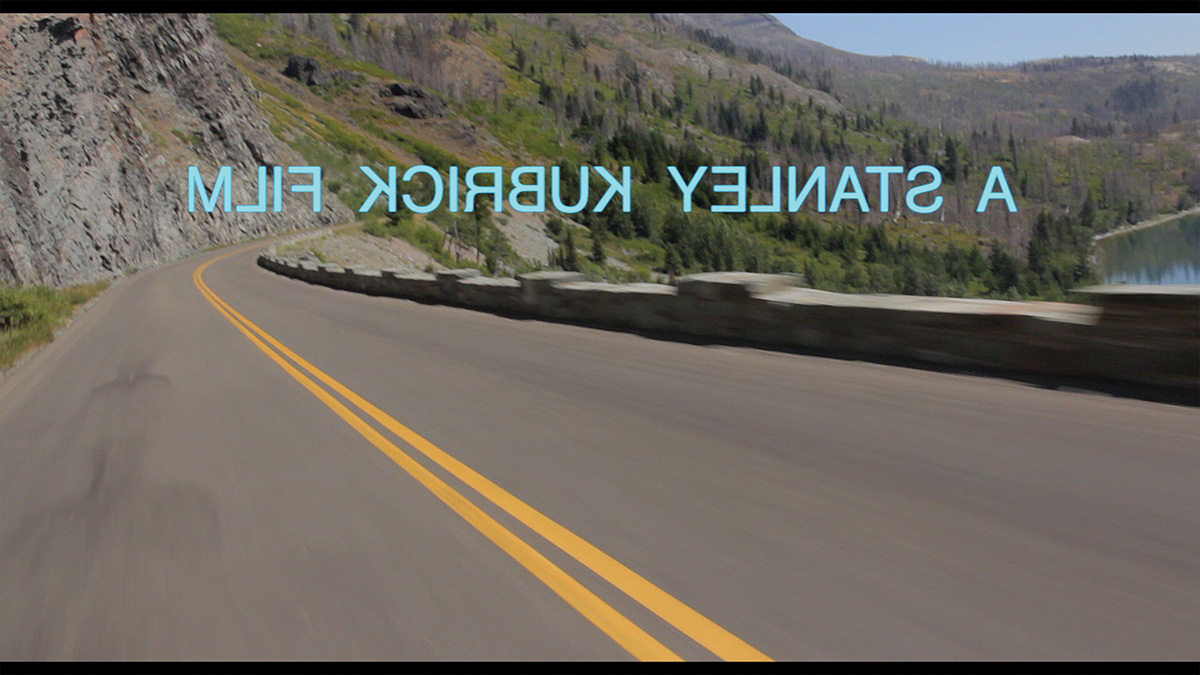
Michael Paulus
A View of Above
Vidéo | mov | couleur | 3:53 | USA | 2021
A reconstructed assemblage of the opening title sequence from the feature film The Shining (1980) by Stanley Kubrick, “A View of Above” was shot in reverse perspective at the actual locations used in the feature film. The original viewpoint is now inverted, looking up, and back at the ominous "eye in the sky" which shadows the yellow Volkswagen as it winds its way up the American Rockies to the Overlook Hotel. The framing, movement, and pacing of the original, feature film sequence is replicated shot by shot in duration and in relationship to the sun and weather. The intent is to recreate the original, but from an altogether different perspective: the gaze defiantly flipped, the viewer is no longer a complicit voyeur of the hapless victim.
Michael Paulus is an interdisciplinary artist living in Portland, Oregon. USA Exploring potential connections between often disparate relationships, his video work often attempts to reveal the hidden, censored, or unassumed in culture, cartography, mechanisms and commonplace conventions. Films and videos have screened at the NW film festival, PDX film festival, various domestic and international film festival as well as the Taipai Biennial, Scope Basel, various gallery installations and recently as part of CORE, -the Nagasaki-Hanford project as part of an installation at Whitman College in Walla Walla, WA in 2018